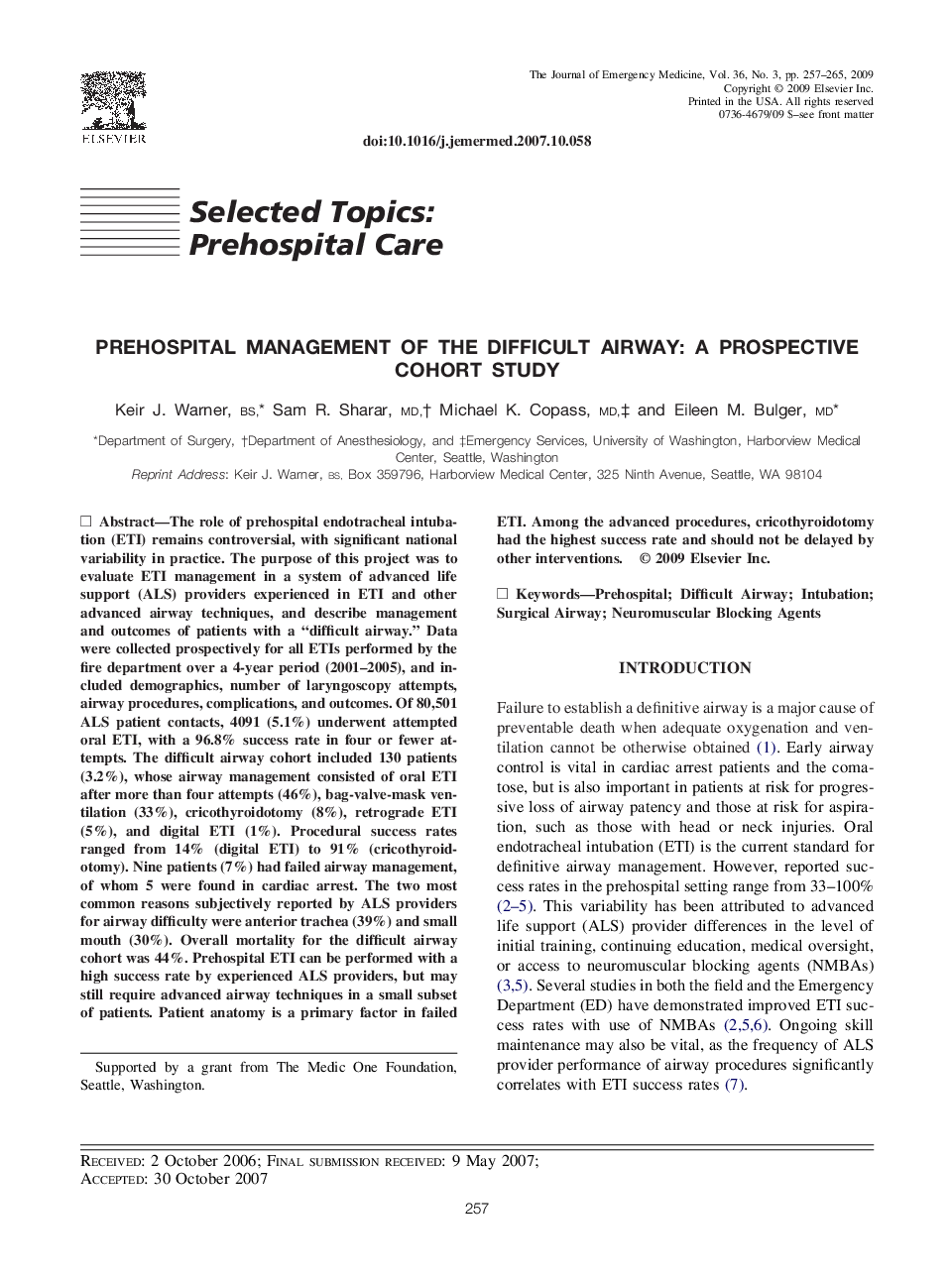| Article ID | Journal | Published Year | Pages | File Type |
|---|---|---|---|---|
| 3248050 | The Journal of Emergency Medicine | 2009 | 9 Pages |
The role of prehospital endotracheal intubation (ETI) remains controversial, with significant national variability in practice. The purpose of this project was to evaluate ETI management in a system of advanced life support (ALS) providers experienced in ETI and other advanced airway techniques, and describe management and outcomes of patients with a “difficult airway.” Data were collected prospectively for all ETIs performed by the fire department over a 4-year period (2001–2005), and included demographics, number of laryngoscopy attempts, airway procedures, complications, and outcomes. Of 80,501 ALS patient contacts, 4091 (5.1%) underwent attempted oral ETI, with a 96.8% success rate in four or fewer attempts. The difficult airway cohort included 130 patients (3.2%), whose airway management consisted of oral ETI after more than four attempts (46%), bag-valve-mask ventilation (33%), cricothyroidotomy (8%), retrograde ETI (5%), and digital ETI (1%). Procedural success rates ranged from 14% (digital ETI) to 91% (cricothyroidotomy). Nine patients (7%) had failed airway management, of whom 5 were found in cardiac arrest. The two most common reasons subjectively reported by ALS providers for airway difficulty were anterior trachea (39%) and small mouth (30%). Overall mortality for the difficult airway cohort was 44%. Prehospital ETI can be performed with a high success rate by experienced ALS providers, but may still require advanced airway techniques in a small subset of patients. Patient anatomy is a primary factor in failed ETI. Among the advanced procedures, cricothyroidotomy had the highest success rate and should not be delayed by other interventions.
